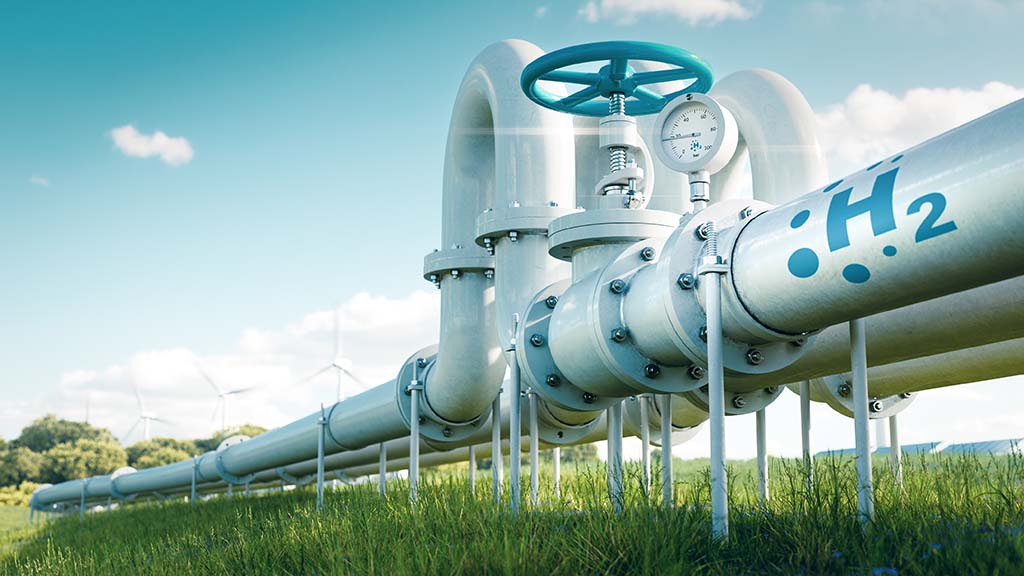The biggest buzz in the gas industry right now is the adoption of hydrogen and rightfully so. I think we can all agree that developing alternatives to methane to reduce both resource dependencies and green house gases is worth investigating. With all the benefits H2 can provide, it is important to cross the chasm from ideas to real world use cases, where the benefits can be seen and measured. So far, real world use cases where H2 has been deployed as a primary fuel source have been challenging, mostly due to Hydrogen’s chemical makeup and specifically, it’s molecular size. If you need an example, just look at NASA’s Artemis 1 moon rocket, which is using liquid hydrogen and oxygen to power the launch. NASA is facing great challenges identifying and controlling hydrogen leaks in fuel lines and seals which is causing delays in launch attempts. These types of challenges, such as leaks, will certainly await transmission and distribution line operators when H2 adoption becomes a reality. So how do we overcome some of these challenges and ascertain if existing pipelines are H2 ready. Perhaps it starts with a modified risk analysis software to access and score your existing assets. Let’s dive deeper into some of the benefits H2 can provide, some of the challenges we will face, and take a look at some of the software solutions we are creating to overcome those challenges.
Though methane is an excellent source for power generation and domestic use, it’s also a very powerful greenhouse gas when emitted to the atmosphere. Hydrogen, on the other hand, is one of the most abundant elements on the planet and has near-zero greenhouse gas emissions when produced via renewables, emitting only water vapor and warm air. The question and challenge at hand is how to mass produce, transport, and scale the adoption of hydrogen to please the everyday consumer. For the sake of words, lets focus on transportation of H2, but we will come back to H2 production and scaling adoption in later blogs.
One interesting concept that is being trialed, is the refurbishing of natural gas pipelines for hydrogen distribution. The great thing about using existing infrastructure is of course reduced time spent in legal, dealing with land rights management complexities, and reducing complexity and costs during the construction process. Refurbishing existing pipelines will certainly reduce a lot of time and streamline adoption, if they can make it happen. Similar to NASA’s Artimis 1 challenge, there are some pitfalls with using existing natural gas infrastructure for Hydrogen adoption. One of the first ones is the fact that hydrogen (H2) and methane (CH2) greatly differ in their chemical makeup. Hydrogen is a much lighter element and therefore less dense than methane which can cause potential leakage challenges especially around valves. Pipeline operators will have to adapt and increase operational protocols which can result in increased inspections and changing equipment that is now H2 ready. Hydrogen also causes pipeline embrittlement which are hairline cracks in the pipeline which expand over time. Hydrogen Embrittlement occurs when metals become brittle as a result of the introduction and diffusion of hydrogen into the material. Other measures that must be addressed are H2’s flame speed, heating, value, and flammability rates. These H2 features make it imperative that we have the right materials and safety protocols in place before H2 is rolled out.
GEOMAGIC is currently working with one of its partners to refurbish our existing integrity management solution Trascue, to help pipeline operators test existing natural gas pipelines for H2 readiness. At its core, Trascue provides transmission and distribution operators a single application to risk rank pipeline assets and highlight potential problematic areas that need to be addressed. We work with our end customers to connect all necessary data like environmental and asset data and which is entered into a user defined algorithms which output a risk score. For H2, we are leveraging ASME B31.12 which is a piping and pipeline code used to design hydrogen pipeline systems. We are taking the ASME B31.12 guidelines and implementing that into Trascue and MAOPC to test stress cracking, what the estimated service time on the line is, how many 100% load changes are possible, and doing other standard risk analysis assessments to help gage readiness.
Though there are many steps we must overcome to adopt H2, the benefits H2 can provide from an abundance and clean energy perspective, are too great to ignore. With testing, time, and the technical solutions being deployed like the one I mentioned, I am confident we will be able to harness the power and benefits that H2 can provide. GEOMAGIC will be releasing a white paper that will provide further in-depth analysis on the H2 project and the software solutions used to determine H2 pipeline readiness. If you would like to learn more about how we are helping gas operators with H2 readiness or would like to receive the H2 whitepaper, please feel free to email me at
